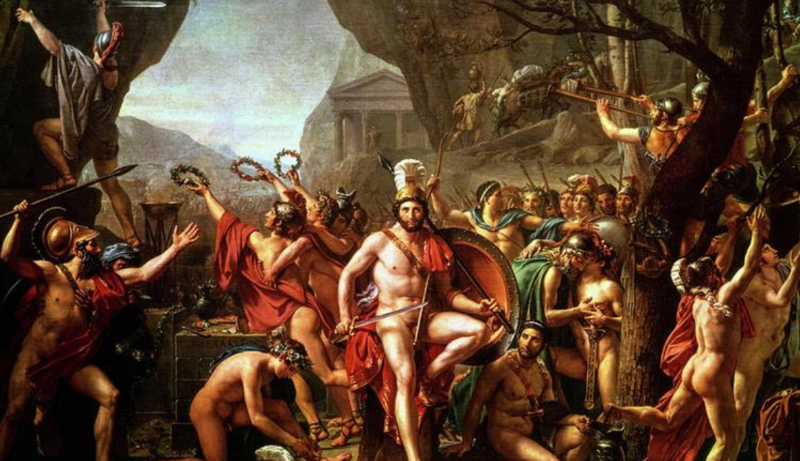Jacques-Louis David’s painting Leonidas at Thermopylae is an oil on canvas. The painting is currently on display at the Louvre in Paris, France.
The huge artwork, which measures around thirteen feet by seventeen and a half feet, was completed in 1814. David worked on the complicated sculpture for about fifteen years, dividing his time between 1799 and 1803 and 1813-1814. Louis XVIII, the King of France at the time, purchased Leonidas at Thermopylae, together with The Intervention of the Sabine Women, in November 1819 for 100,000 francs. The painting depicts Spartan King Leonidas before the Battle of Thermopylae. It was co-created by David’s student Georges Rouget.
While King Leonidas and his three hundred warriors were defeated at the time, their bravery and sacrifice inspired David throughout France’s internal struggle.
The crowded and theatrical event depicted by David takes place during a period of conflict, presumably in Greece, as evidenced by the Greek temple and temperate mountains in the background. The battle depicted is the Battle of Thermopylae, which occurred in 480 B.C. Because of its rocky environment and tight entrance, Thermopylae, which means “hot gates,” was chosen as the ideal location for this conflict. This enabled the Greeks to defend themselves better against the invading Persians. In the long run, Spartan King Leonidas “delayed the invasion of Darius I and the Persians…by sacrificing himself and his men to give the Greeks the time they needed to organize an ultimately victorious resistance.”
When David painted Leonidas at Thermopylae, France was in the grip of Napoleon Bonaparte’s First French Empire. David believed that France needed a hero to sacrifice himself for the greater benefit of his country, and he was inspired by the story of Leonidas and the Battle of Thermopylae. This was all happening during the French Revolution, when enemy armies were closing in on France’s frontiers; these occurrences are similar to how the Spartans felt at the Battle of Thermopylae, which is the central theme of David’s painting.
When Napoleon Bonaparte saw David’s latest paintings on display in 1799, “he criticized the lack of action and the fixed poses of the warriors in The Sabine Women.” This criticism from one of David’s heroes forced David to revert to what he considered the Academy’s fundamental foundations, Greek classical art. This masterwork depicts not only the ideals, but also the Greek subjects, in order to communicate the heroic nature of this historical conflict.
David drew numerous sketches before completing the final oil on canvas composition. A drawing from 1814 is a compositional exercise that was produced in two halves, leaving the final result jagged and overworked. There are a few differences between this compositional study and the final painting, one of which is a more complete view of the background, which was achieved by removing the trees and branches from the previous sketch. Classical masculine figures were incorporated in David’s designs for Leonidas at Thermopylae from the start.











